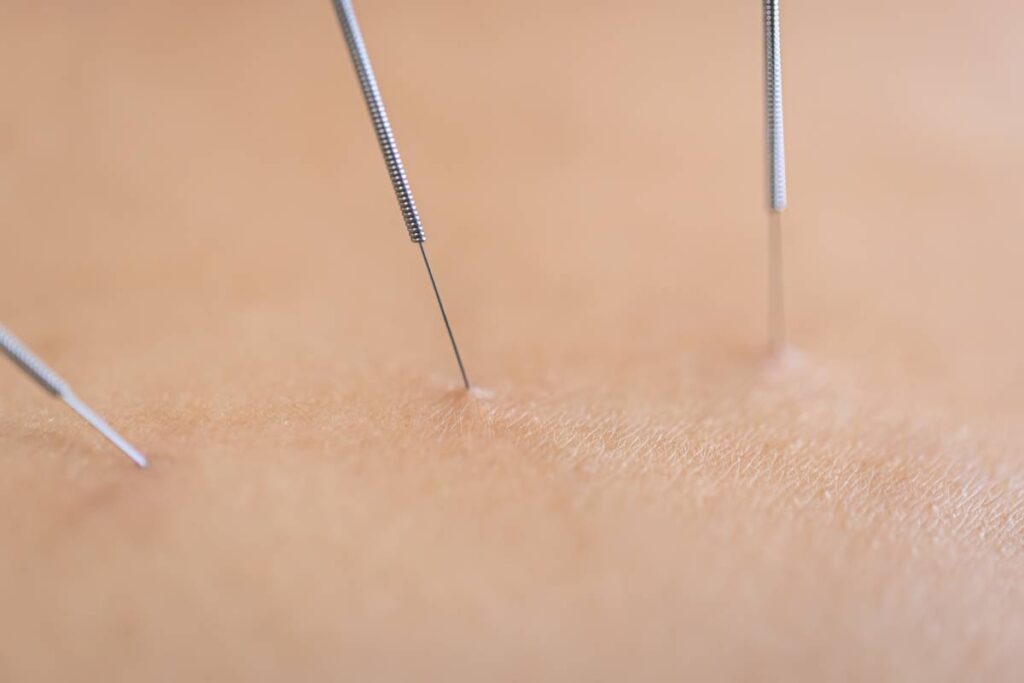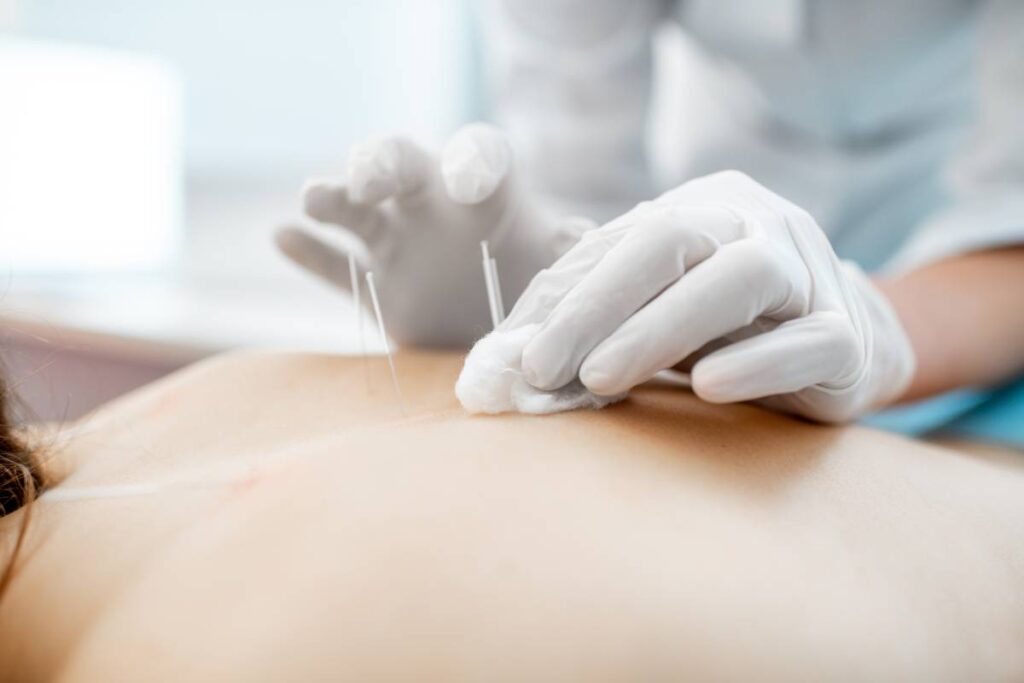Acupuncture, an ancient healing practice originating in China over two millennia ago, has garnered significant attention in both traditional and modern medicine. Its utilization of sterile needles inserted into specific points on the body aims to restore balance and alleviate ailments.
While its efficacy is widely debated, acupuncture’s safety remains a paramount concern for both practitioners and patients. Today, we’ll look into the safety considerations surrounding acupuncture, exploring its mechanisms, potential risks, and overall suitability as a therapeutic option.
What is the history behind acupuncture?
Acupuncture is an ancient healing practice that originated in China around 2,500 years ago. Its roots are intertwined with traditional Chinese medicine (TCM), a comprehensive system of medicine that includes various practices such as herbal medicine, dietary therapy, massage (tui na), and exercise (qigong).

The precise origins of acupuncture are somewhat shrouded in legend and mythology. One popular legend attributes the discovery of acupuncture to the Chinese emperor Shen Nong, who is said to have experimented with different herbs and treatments, including using sharp stones to relieve pain. Another legend credits the discovery of acupuncture to the legendary Yellow Emperor, Huangdi, who is said to have compiled the Huangdi Neijing (The Yellow Emperor’s Inner Canon), one of the oldest medical texts in China.
Historically, acupuncture developed over centuries through observation, trial and error, and refinement of techniques. Traditional Chinese medicine views health as a balance of opposing forces or energies, known as yin and yang, and the harmonious flow of vital energy or life force, called qi (pronounced “chee”). Illness and disease are believed to result from imbalances or blockages in the flow of qi along pathways known as meridians.
Acupuncture involves the insertion of thin needles into specific points on the body along these meridians to stimulate and balance the flow of qi, thereby promoting healing and restoring health. Over time, acupuncture spread beyond China to other parts of East Asia and eventually to the West, where it has gained increasing acceptance and popularity as a complementary and alternative therapy.
While acupuncture’s effectiveness has been studied and debated, it is widely used for various conditions, including pain management, stress reduction, and promoting general well-being. In recent years, scientific research has increasingly focused on understanding the physiological mechanisms underlying acupuncture and its potential therapeutic benefits, leading to a growing body of evidence supporting its efficacy for certain conditions.
How does acupuncture work?
Acupuncture points, according to anatomy, are areas of skin with higher electrical conductivity and different tissue structures compared to nearby areas.
According to this, here are various theories to explain how acupuncture works:
- Gate Control Theory of Pain: This theory suggests that specific nerve fibres carry pain signals to the brain via the spinal cord, while other nerve fibres can block or reduce these pain signals. Acupuncture may activate these blocking nerve fibres temporarily, reducing the transmission of pain signals to the brain.
- Endorphin Model: Research in the 1970s discovered natural pain-relieving chemicals called endorphins in the brain and spinal cord. Studies showed that acupuncture at specific points increased the production of endorphins in the body, providing pain relief. This effect was reduced when a drug called naloxone, which blocks the effects of endorphins, was used, indicating that acupuncture’s pain relief may involve these natural opioids.
- Neurotransmitter Model: Studies in animals have shown that acupuncture can affect neurotransmitters like serotonin, norepinephrine, and gamma-aminobutyric acid (GABA). By modulating these neurotransmitters, acupuncture may be effective in treating conditions like depression, anxiety, and addiction.
- Other Theories: Some theories propose that acupuncture can indirectly influence the autonomic nervous system, affecting functions like breathing, heart rate, blood pressure, and immune response. Research also suggests increased electrical conductivity along acupuncture meridians, implying that acupuncture needles may influence certain body signals. While these scientific theories provide insight into acupuncture’s effects on the nervous system, it’s clear that acupuncture’s benefits likely stem from a combination of mechanisms rather than a single explanation.

Is acupuncture safe?
Acupuncture is generally considered safe when performed by a qualified and experienced practitioner using sterile needles. However, as with any medical treatment, there are potential risks and side effects to consider.
Here are some points to keep in mind regarding the safety of acupuncture:
- Sterile Needles: Reputable acupuncturists use sterile, single-use needles to minimize the risk of infection. It’s essential to ensure that the practitioner follows proper hygiene and safety protocols.
- Minimal Side Effects: The most common side effects of acupuncture are minor and include soreness, bruising, or slight bleeding at the needle insertion sites. These side effects typically resolve quickly and are considered mild.
- Rare Complications: While rare, serious complications such as organ injury, nerve damage, or infections can occur if acupuncture is performed incorrectly or by an unqualified practitioner. Choosing a licensed and trained acupuncturist reduces the risk of such complications.
- Safety Concerns: Certain groups of people, such as pregnant women, individuals with bleeding disorders, or those with compromised immune systems, should exercise caution when considering acupuncture. It’s crucial to discuss any pre-existing medical conditions or concerns with your healthcare provider before undergoing acupuncture treatment.
- Regulation and Licensing: In many countries, including the United States, acupuncture is regulated, and practitioners are required to meet specific training and licensing requirements. Checking the credentials and qualifications of an acupuncturist before treatment can help ensure safety.
- Effectiveness: While acupuncture is generally safe, its effectiveness for specific conditions may vary. It’s essential to have realistic expectations about the outcomes of acupuncture treatment and to discuss any concerns or questions with your acupuncturist.
Is acupuncture a general practice and accepted in Australia?
Acupuncture has a long history in Australia, dating back to the 1880s, and is considered a form of complementary and alternative medicine in the country. Over the past two decades, from the 1990s onwards, acupuncture has seen significant growth. Presently, there are almost 4000 registered acupuncturists under the Chinese Medicine Board of Australia, and terms like “Acupuncturist,” “Oriental medicine practitioner,” and “Chinese medicine practitioner” are reserved for these registered professionals.
To become a registered acupuncturist in Australia, a minimum requirement is a four-year bachelor’s degree in related fields. Several public universities and private colleges offer undergraduate and postgraduate programs approved by the Chinese Medicine Board of Australia, with opportunities for Master’s and Doctor of Philosophy degrees as well.

Acupuncture enjoys widespread acceptance among Australians, with 10% of the population having received this treatment, and approximately 80% of general medical practitioners referring their patients to acupuncture services. Private health insurance schemes typically provide rebates for acupuncture treatments, and third-party payment options are available in most Australian states and territories.
Since the year 2000, there has been a significant increase in research output related to acupuncture, with a focus on its mechanisms of action, effectiveness in managing pain, and treatment of gynaecological and respiratory conditions.
Looking ahead, the future of acupuncture in Australia aims to integrate this form of medicine into hospitals and make it accessible through the medical benefit scheme, particularly targeting disadvantaged communities. Through improved education, regulation, and research, Australia is positioned as a leader among Western countries in providing acupuncture services.
In conclusion
Acupuncture, when administered by qualified practitioners using proper hygiene protocols, is generally regarded as a safe therapeutic modality. Despite its millennia-long history, ongoing research continues to elucidate its mechanisms of action and safety profile, particularly in the context of addressing ailments such as back pain.
With proper precautions and oversight, acupuncture can serve as a valuable complement to conventional medical treatments, offering relief and promoting overall well-being, especially for those seeking relief from back pain.








